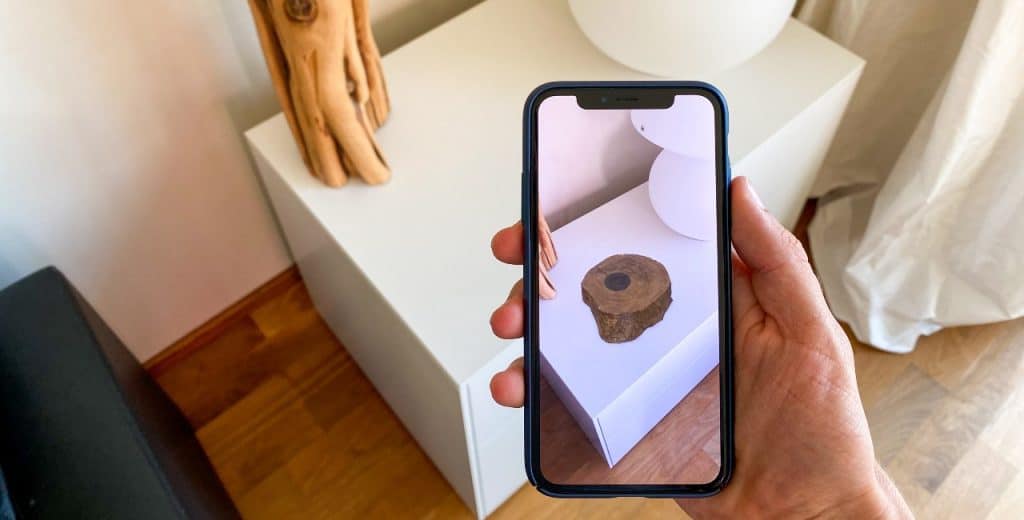Mobile apps are a big business. The Apple App Store earned more than $72 billion in 2020 alone, yet most of these apps are free to download. Companies wouldn’t focus so much on apps if they didn’t generate revenue, so how do free apps make money?
The answer comes down to the specific app in question. Free apps have a lot of options for how they can make money, and some even use multiple different strategies. Here’s a look at eight of the most common ways free apps make money.
Advertising
By far, the easiest and most popular way for free apps to make money is through advertising. Almost half of all non-gaming apps use in-app ads, and it’s easy to see why. People use apps frequently, so running ads on these programs is an excellent way to get your brand out there.
As a result, companies are willing to spend quite a bit on advertising their products or services in popular apps. App developers can then rely on this ad money as their chief source of revenue, earning a considerable amount while keeping their apps free.
How these ads generate money for app developers can vary. Most of the time, advertisers pay them a small amount every time someone clicks on an ad. Other times, they pay per impression or every time someone sees the ad. In every case, these individual payments are normally minuscule, but they add up over time.
Selling User Data
Another way free apps make money is by selling their users’ data. While that sounds like something not many developers would admit to, 30% of all free mobile apps do it.
How you use an app can reveal a lot about you, like your location or interests. That information can help companies target their ads more effectively, showing them to people who are more likely to make a purchase. That kind of targeted marketing dominates online advertising today, so businesses may pay a pretty penny for relevant data.
This trend does raise some privacy and security concerns among some people. Many apps take steps to keep this information from slipping into the wrong hands, but there are security risks with every data collection process.
In-App Purchases
Free apps can also make money by including some paid content. While the app itself may be free to download, users have to pay to access some exclusive in-app features. One of the best examples of this business model is Fortnite.
Despite being free, Fortnite made $2 million a day on iOS when it launched in 2018. This money comes entirely from microtransactions, which are small, optional in-game purchases. You can play for free, but if you want different costumes, dances or game modes, you’ll have to pay for them.
In-app purchases like this often encourage users to spend money by placing the most enticing part of the app behind a paywall. Since these items normally have a small price tag, it doesn’t take much to convince users to pay for them, either.
Subscriptions
A similar method is to offer subscription tiers. These are a form of in-app purchase, but instead of buying small individual items, users will sign up for recurring payments that expand what they can do in the app. Some people also call this a “freemium” model.
A common way to go about this is to have a free version of the app that runs ads and then offer a paid level with no ads. That way, the app developers make money regardless of how people use the app. Those who don’t want to pay can live with the ads, and those who don’t want to see ads can pay.
Other apps offer new features or fewer limitations for paid levels. For example, cloud storage app Dropbox offers just 2GB of storage for free but provides more if users pay a subscription.
Merchandise
Some free apps make money by selling merchandise. These models work the same as other in-app purchases, but instead of unlocking things to use in the app, users buy physical goods.
If an app becomes popular enough, users will likely buy branded merch like t-shirts, phone cases and stickers. Its fanbase can then keep using the app for free but pay for these physical items if they want them. Some merch items can have a considerable profit margin, too, but this method can be tricky because you don’t know if people want merchandise.
Users won’t likely buy merch until the app gains widespread popularity. To work around that, many developers use another method like running ads first, selling merch later.
Sales Commissions
E-commerce apps and similar services can make money while staying free by taking commissions on sales. When someone makes a sale on these apps, the app takes a cut of the profits. Amazon is one of the best examples of this.
For most sellers, Amazon takes 15% of the sale price whenever someone buys something from a business on their site. Some sales will have fees as low as 6%, and others go as high as 45%. These fees may seem high, but without an app like Amazon, sellers may have a hard time finding customers and managing orders, so they’re willing to give up this portion of their profits.
Similarly, coupon app Honey earns a small commission for every purchase users make when using the app. The sales entice businesses to support Honey, and Honey can stay free to its users thanks to the commission.
Sponsorships
A less popular but still viable way free apps can make money is through sponsorships. In return for payment from a brand, an app will promote it within the app. That could look like dedicated ads, redirecting users to their website through sponsored content or simply posting their name in the app.
These sponsorships typically promote a company that serves the app’s target audience. For example, a dieting app may always link to a business that sells healthy foods. You don’t see these business models as often, but some apps rely on them.
There Are Many Ways for Free Apps to Make Money
Even a free app can make a lot of money, and there are many ways to do so. These eight methods aren’t the only ways free apps make money, but they’re the most popular. Next time you’re using an app, ask yourself how it stays in business, and look for these strategies.
Recent Stories
Follow Us On
Get the latest tech stories and news in seconds!
Sign up for our newsletter below to receive updates about technology trends




